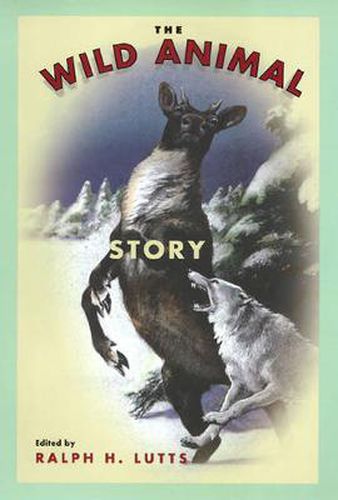Readings Newsletter
Become a Readings Member to make your shopping experience even easier.
Sign in or sign up for free!
You’re not far away from qualifying for FREE standard shipping within Australia
You’ve qualified for FREE standard shipping within Australia
The cart is loading…






At the beginning of the 20th century, the wild animal story emerged in Canadian literature as a distinct genre, in which animals pursue their own interests - survival for themselves, their offspring, and perhaps a mate, or the pure pleasure of their wildness. Bringing together some of the most celebrated wild animal stories, Ralph H. Lutts places them firmly in the context of heated controversies about animal intelligence and purposeful behaviour. Widely regarded as entertaining and educational, the early stories - by Charles G.D. Roberts, Ernest Thompson Seton, John Muir, Jack London and others - had an avid readership among adults and children. But some naturalists and at least one hunter - Theodore Roosevelt - discredited these writers as nature fakers , accusing them of falsely portraying animal behaviour. The stories and commentaries collected here span the 20th century. As present-day animal behaviourists, psychologists and the public attempt to sort out the meaning of what animals do and our obligations to them, commercial books, films and television documentaries have become the main source of public information about nature and wild creatures. In this account of our radically changed views of animals, Ralph Lutts maps some of the prominent features of our cultural landscape. Tales include: The Springfield Fox by Ernest Thompson Seton; The Sounding of the Call by Jack London; Stickeen by John Muir; and Journey to the Sea by Rachel Carson. Other selections include essays by Theodore Roosevelt, John Burroughs, Margaret Atwood and Ralph H. Lutts.
$9.00 standard shipping within Australia
FREE standard shipping within Australia for orders over $100.00
Express & International shipping calculated at checkout
At the beginning of the 20th century, the wild animal story emerged in Canadian literature as a distinct genre, in which animals pursue their own interests - survival for themselves, their offspring, and perhaps a mate, or the pure pleasure of their wildness. Bringing together some of the most celebrated wild animal stories, Ralph H. Lutts places them firmly in the context of heated controversies about animal intelligence and purposeful behaviour. Widely regarded as entertaining and educational, the early stories - by Charles G.D. Roberts, Ernest Thompson Seton, John Muir, Jack London and others - had an avid readership among adults and children. But some naturalists and at least one hunter - Theodore Roosevelt - discredited these writers as nature fakers , accusing them of falsely portraying animal behaviour. The stories and commentaries collected here span the 20th century. As present-day animal behaviourists, psychologists and the public attempt to sort out the meaning of what animals do and our obligations to them, commercial books, films and television documentaries have become the main source of public information about nature and wild creatures. In this account of our radically changed views of animals, Ralph Lutts maps some of the prominent features of our cultural landscape. Tales include: The Springfield Fox by Ernest Thompson Seton; The Sounding of the Call by Jack London; Stickeen by John Muir; and Journey to the Sea by Rachel Carson. Other selections include essays by Theodore Roosevelt, John Burroughs, Margaret Atwood and Ralph H. Lutts.